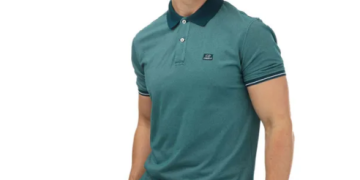Introduction
The Roaring Twenties, characterized by economic prosperity, cultural dynamism, and social liberation, left an indelible mark on the world of fashion. In this article, we delve into the enduring influence of this iconic era on contemporary fashion trends.
Flapper Fashion: Redefining Women’s Style
The emergence of the flapper in the 1920s revolutionized women’s fashion, with its daring and unconventional aesthetic. Flappers embraced dropped waistlines, shorter hemlines, and embellishments like beads and fringe, challenging traditional notions of femininity and propriety. Today, elements of flapper fashion continue to inspire modern women’s wear, from fringe dresses to beaded accessories.
Art Deco Influence: Glamour and Opulence
Art Deco design principles, characterized by geometric patterns and bold colors, dominated the visual landscape of the 1920s. This glamorous and opulent style extended beyond architecture and decor to influence fashion, with designers incorporating Art Deco motifs into clothing and accessories. The elegance and sophistication of Art Deco still resonate in contemporary fashion, seen in geometric jewelry, embellished evening gowns, and graphic prints.
Cultural Shifts: Liberation and Expression
The Roaring Twenties witnessed significant cultural shifts that impacted fashion trends. As societal norms relaxed, women embraced more casual and sporty attire, reflecting newfound independence and freedom. This shift towards comfort and practicality laid the foundation for modern attitudes towards fashion, where self-expression and individuality are celebrated.
Technological Advancements: Fabrics and Silhouettes
Technological advancements in textile production during the 1920s revolutionized fashion, enabling the mass production of new fabrics like rayon and synthetic blends. These innovations allowed for the creation of garments with greater flexibility and movement, contributing to the iconic silhouette of the era characterized by loose, unstructured shapes. Today, modern fashion owes much to the experimentation with fabrics and silhouettes pioneered in the Roaring Twenties.
Celebrity Influence: Hollywood and Beyond
The burgeoning celebrity culture of the 1920s, fueled by the rise of Hollywood and the popularity of movie stars, played a significant role in shaping fashion trends. Icons like Clara Bow and Louise Brooks captivated audiences with their glamorous style, influencing everything from hairstyles to hemlines. This celebrity endorsement of fashion continues to drive trends in the modern era, with celebrities often serving as ambassadors for designer brands and influencing consumer behavior.
Revival of Vintage: Nostalgia and Retro Fashion
In recent years, there has been a resurgence of interest in vintage fashion, with designers and consumers alike embracing retro-inspired looks from the Roaring Twenties. From flapper dresses to Art Deco accessories, there is a growing nostalgia for the glamour and sophistication of the era. This revival of vintage fashion reflects a desire to recapture the elegance and allure of the past in a contemporary context.
Gender Fluidity: Breaking Fashion Norms
The Roaring Twenties challenged traditional notions of gender and fashion, with both men and women embracing styles that defied conventional norms. Women abandoned restrictive corsets in favor of loose-fitting dresses, while men experimented with bolder colors and patterns in their attire. This blurring of gender lines continues to influence modern fashion, with designers creating gender-fluid collections that celebrate diversity and self-expression.
Global Impact: Spreading Fashion Trends
The influence of Roaring Twenties fashion extended far beyond the borders of the United States, spreading to international markets and inspiring designers around the world. From Paris to Shanghai, the styles of the era were adapted and reinterpreted to suit different cultural sensibilities, reflecting the interconnectedness of global fashion. Today, the legacy of the Roaring Twenties lives on in the diverse and eclectic nature of contemporary fashion.
Conclusion
The Roaring Twenties was a transformative period in the history of fashion, characterized by innovation, liberation, and glamour. Its influence continues to resonate in modern fashion trends, from the liberated spirit of the flapper to the opulent aesthetic of Art Deco. As we celebrate the legacy of this iconic era, we are reminded of the enduring power of fashion to inspire, captivate, and reinvent itself.

FAQs:
How did the flapper style influence modern fashion?
The flapper style revolutionized women’s fashion by introducing shorter hemlines, dropped waistlines, and embellishments like fringe and beads. These elements continue to inspire modern women’s wear, reflecting a daring and unconventional aesthetic.
What are some key characteristics of Art Deco fashion?
Art Deco fashion is characterized by geometric patterns, bold colors, and opulent embellishments. It embraces glamour and sophistication, with designers incorporating Art Deco motifs into clothing and accessories.
Why is vintage fashion from the 1920s experiencing a resurgence in popularity?
Vintage fashion from the 1920s is experiencing a resurgence due to a growing nostalgia for the glamour and sophistication of the era. Designers and consumers alike are drawn to retro-inspired looks, from flapper dresses to Art Deco accessories.
How did celebrities contribute to fashion trends during the Roaring Twenties?
Celebrities played a significant role in shaping fashion trends during the Roaring Twenties, with movie stars like Clara Bow and Louise Brooks influencing everything from hairstyles to hemlines. Their glamorous style captivated audiences and set the tone for fashion of the era.
What are some examples of gender-fluid fashion inspired by the 1920s?
Gender-fluid fashion inspired by the 1920s embraces styles that defy traditional gender norms, such as loose-fitting dresses for women and bold colors and patterns for men. Designers today continue to create collections that celebrate diversity and self-expression, drawing inspiration from the liberated spirit of the Roaring Twenties.




